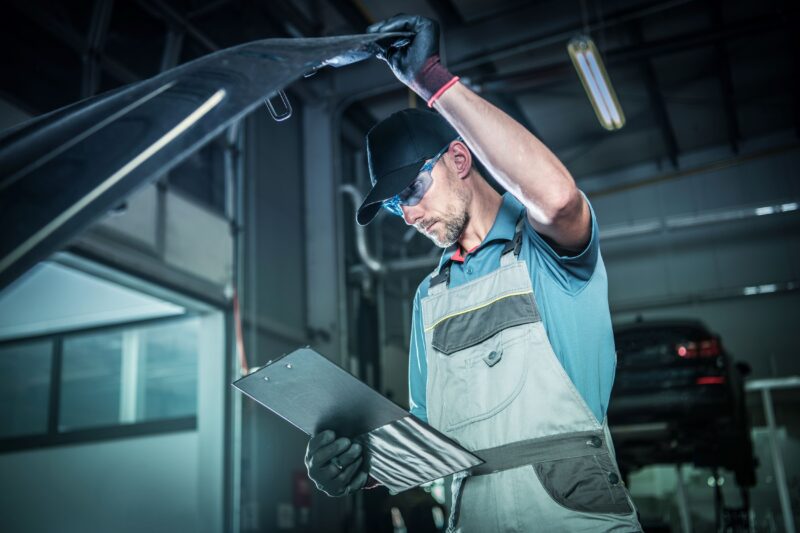Reconditioning is considered by many to be one of the most boring aspects of running a store. And as a result of this, it is often taken for granted or completely overlooked.
Many managers and owners think that reconditioning only deals with the things we do to get vehicles ready to retail. The truth is it should be intertwined into the sales philosophy, the training systems, the selling process as well as the handling of service customers.
It should also play a major role in the owner retention and all customer handling processes. Your reconditioning philosophy ultimately will shape the culture within the store and have a lasting impact on the employees and your customers, as well as your store’s reputation.
Standards should be set for the replacement, repair or “Let It Slide” decisions.
These standards should become common knowledge and be used to train technicians, as well as salespeople, and be used to close deals and communicate with customers.
Examples of items with standards for decisioning:
• Oil and filter changes
• Tire tread depth before replacing
• Brake pad/shoe thickness before replacing
• Turning rotors or replacing rotors on all jobs that need turning
• Acceptable size for windshield pecks/stars based on your own philosophy
• Broken or cracked tail light or turning light covers
• Replacement of air filters or clean them
• How we will handle factory recalls, both before and after the sale.
Standards should be set for items that could be replaced with after-market parts, remanufactured parts and used parts.
By setting standards, you will speed up the decision making and will also save time and money on things that do not need to be done to your vehicles.
There is a multitude of software options that can be used for distributing workload, matching jobs with techs that are qualified for the jobs, video training for techs and the proper method of completing a specific job. In addition, there are online tools for shopping for the best price and availability of parts needed, and for streamlining and executing the most efficient workflow.
If you need help or advice, you can contact the Dealer Education department at NIADA. or our consulting experts. But in any event, you need to formalize your unique reconditioning program by putting it in writing and execute it relentlessly.
If you really want to “go it on your own” and have either the extra time or extra manpower to execute the training, I would suggest that you start with your reconditioning process and any quality guarantees that you offer on the vehicles that you have reconditioned. Your reconditioning process, the inspection and the subsequent repairs made, should be intertwined into your Sales Philosophy, your Sales Training and Sales Process. They should also be the foundation for your owner retention and customer handling processes. Your reconditioning philosophy ultimately will shape the culture within the store and have a lasting impact on your customers and employees, as well as your store reputation within your community and online.
Another thing that you could do for some additional reinforcement of the “Reconditioning Story” is to produce some Point of Purchase leaflets or brochures that serve as a reminder to the salespeople to share the reconditioning process and associated information. Posters or wall hangings also are great “reminders” for the salespeople and sales managers to “actively sell” the recon story.
The posters or wall hangings can also double as a way for the salespeople to let sales management know that they have a customer that is wanting to leave the store without buying. In this situation, the salesperson simply asks the customer to step over to the poster and allow for the salesperson to point out and remind the customer that while others may tell the customer about their inspection process, “We put ours in writing and on display because we feel so strongly about it”. This immediately becomes an opportunity for the sales manager to intercede with a “soft” T.O.
Not only is this a great T.O. mechanism, it allows for the sales manager to confirm that his sales person did, in fact, cover the recon story and inspection process by immediately launching into the recon story and inspection process with the exact word track that the salesperson was supposed to use. By doing this, the customer is likely to tell the sales manager that the salesperson has already covered the items. Or the sales manager can ask for confirmation that it was already covered. Guess what, if the salesperson has not cover it and you have made this activity a part of your sales process, it’s time for a private discussion with that salesperson.
A written inspection process that is monitored for use and accuracy is critical to reconditioning, because:
• It can be used as a sales or sales training tool
• It can be used to identify evidence of skimping on recommended or needed repairs by management
• It can be used as a tool to identify signs of technicians taking short cuts on inspections
• It can be used to determine if a tech needs training with certain repairs
• It can be used to create more credibility in the eyes of a lender
• It can help with Extended Service Agreement claims and Sales.
So, remember that while we want to recondition in a manner that is most efficient and at the best price for each unique vehicle, we also should take full credit for the things we do to our inventory and use them to help us sell more volume and generate more gross profit.
Reconditioning is all about building value and confidence in our inventory.











